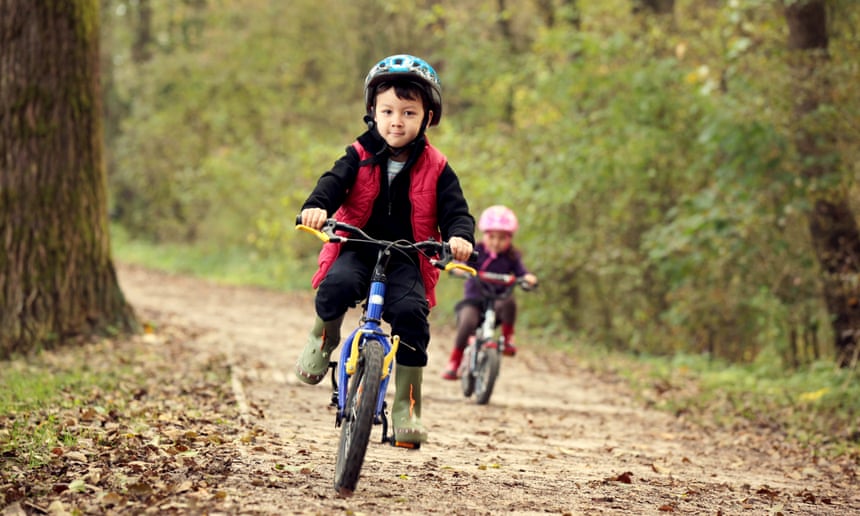Risk is essential to childhood – as are scrapes, grazes, falls and panic
Children need to be exposed to risky play. For ‘helicopter parents’, this might be difficult - but kids need to learn to manage danger themselves
Following yesterday’s all-party parliamentary group report on a fit and healthy childhood, diligent parents everywhere are wondering how much risk they should introduce into their children’s lives. The report stated that: “Risky play, involving perhaps rough and tumble, height, speed, playing near potentially dangerous elements such as water, cliffs and exploring alone with the possibility of getting lost, gives children a feeling of thrill and excitement.”
Risk is an essential component of a balanced childhood. Exposure to healthy risk, particularly physical, enables children to experience fear, and learn the strengths and limitations of their own body. However, before you book a one-way ticket to Beachy Head for you and the toddler, or dump the iPad-loving six-year-old in the woods with just a compass, let’s think about this more carefully.
For this generation of children, shuttled from padded soft play, to school, to club, to sofa, we’ve got a lot of work to do before they come over all Bear Grylls. As parents, many of us are unaccustomed to allowing even the tiniest degree of danger to enter the lives of our children. Surely it’s the job of a good parent to keep them safe? That’s why roaming distance (how far children play from home)has decreased by 90% in the past 30 years.
We are a nation of pushy helicopter parents, project managing a schedule of activities and waiting below our children on the monkey bars in case they should slip. It’s no wonder that the simulated risk of computer games is so compelling and addictive – the real world seems rather tame in comparison. Yet humans are designed to experience a degree of fear – manage it out of their lives and they will seek it elsewhere, on the internet or with self-destructive behaviour.
So how can we put some of that danger and excitement back into the lives of our cosseted children? The answer is step-by-step and in an age-appropriate way. First, the outdoors is key. Outdoors time every day is essential, and don’t just gravitate to the neat and controlled environment of the play area. Encourage the toddler to poke around under hedges and permit your primary-age children to leave your sight. Unsupervised time, even just in the garden, might lead to more cuts and scrapes or fights between siblings, but it is what many of us did as children and it teaches them how to make risk-related decisions for themselves.
Learning to light a fire is a rite of passage for most children, and from the age of three they can be actively involved in feeding and managing a small bonfire. You’ll want to supervise of course, making sure they’re not wearing flammable clothing and showing them how to behave safely, but you will be astonished by the respect they will show the flames.
Water, too, is an essential healthy risk. Let them climb in streams and fall over in the sea wearing all their clothes, let them slide in mud on a salt marsh or go wild swimming in a river. You can even discover and crawl through tunnels below rural roads, where streams pass under. Your job as an adult is to manage the risk – checking the tides before venturing on to a salt marsh or researching good swimming rivers, then stepping back to allow them to make their own decisions, which will inevitably vary from child to child.
Risky sports are a reasonably controlled way to allow your children to feel fear.Horse riding or skiing might be expensive, but what about skateboarding, tree-climbing or rock-climbing? Your child could fall at some stage, and they will probably feel out of control – but wow, they’ll feel alive.
This isn’t just the responsibility of parents. The parliamentary report states that society’s risk-averse attitude to young people’s lives affects everything from school-based activities to the design of play areas, where eliminating any potential danger or cause for future litigation is the highest goal. Risk perception is like a muscle that needs to be developed and flexed. Parents and authorities need to work together to give our children real childhoods where scrapes and grazes, falls and panic are normal. Then, when you are confident that your child’s risk radar is working, you can all play near a cliff.





